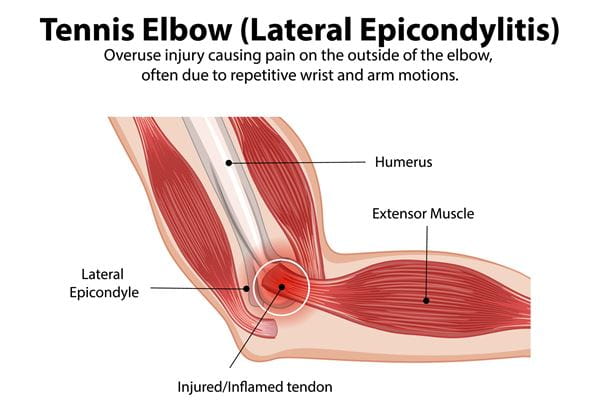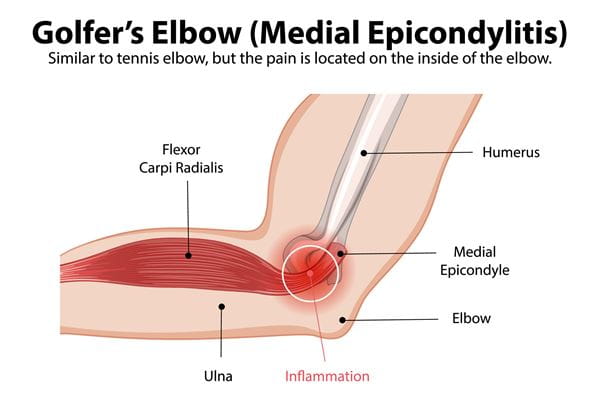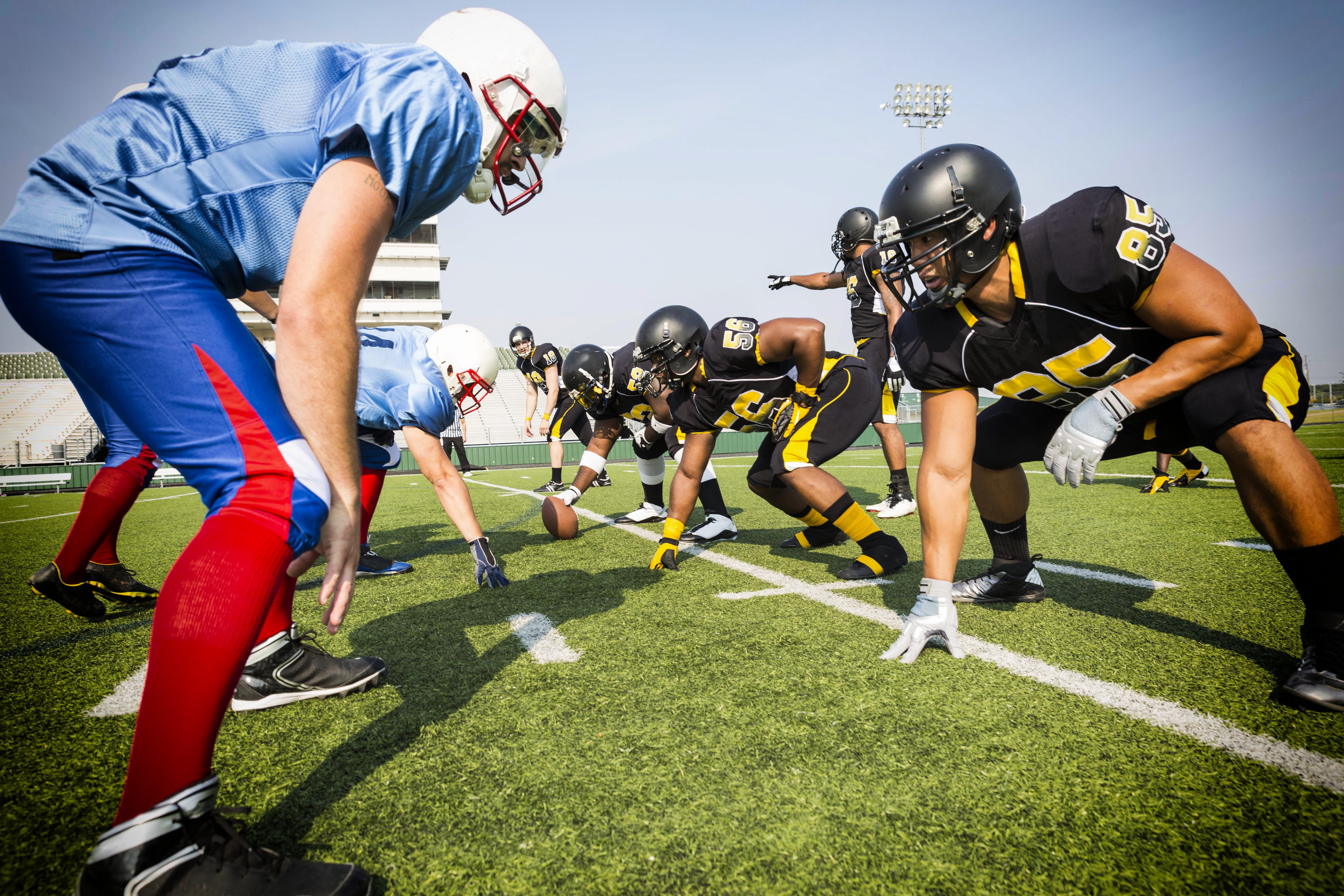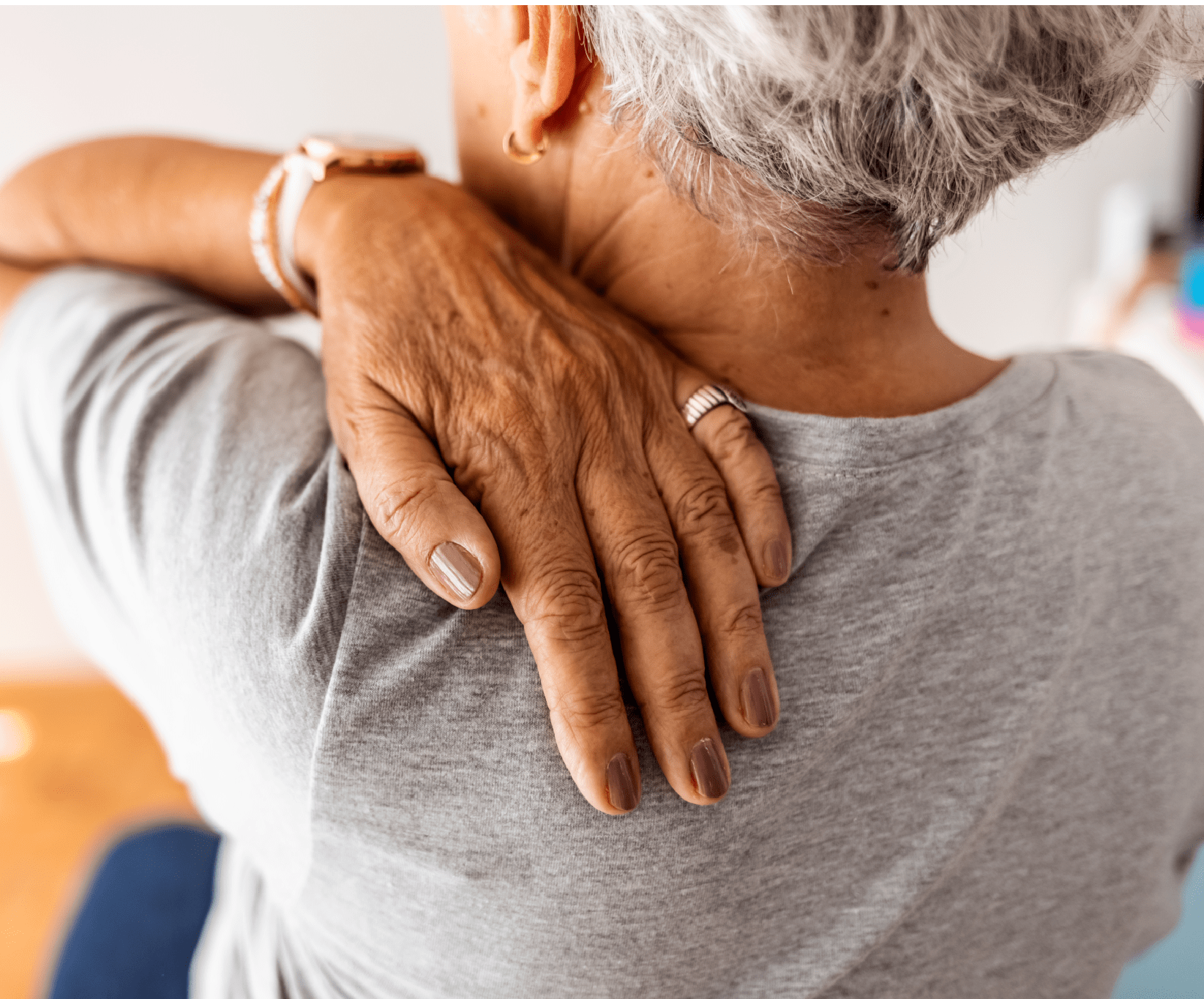It happens in a moment—you’re lifting a heavy box or reaching for something awkwardly when pain strikes your elbow. Whether the pain comes on suddenly or builds over time, elbow discomfort can be more than just a minor annoyance. It could signal a tendon tear, or more commonly, tennis elbow or golfer’s elbow which are conditions that affect thousands of people each year.
“A tendon tear at the elbow is not very common,” says Barbaro J. Perez, M.D., Orthopedic Surgeon at Riverside Orthopedic and Sports Medicine Specialists Gloucester. “It usually occurs when your elbow is suddenly forced straight under pressure, like when lifting something heavy. This can tear the tendon away from the bone. But more often, elbow pain stems from repetitive motion injuries.”
Elbow pain is surprisingly familiar to many people, though, whether it creeps in after hours at the computer or flares up during your weekend pickleball match. Understanding what’s behind your discomfort is the first step to feeling better. In this blog, we’ll break down the signs of elbow tendon injuries, the difference between tennis and golfer’s elbow, and the best ways to treat and prevent long-term damage.
Not Just for Athletes: Tennis and Golfer’s Elbow Explained
Despite their names, tennis elbow and golfer’s elbow aren’t limited to athletes. These common overuse injuries are known medically as lateral and medial epicondylitis, and they affect people of all ages and professions. Whether you’re a painter, a chef or someone who spends hours on a keyboard, these conditions can result from the repetitive motions you make every day.
- Tennis elbow: Involves pain on the outside of the elbow, typically caused by repetitive extension of the wrist, like when swinging a racket or gripping a tool.

- Golfer’s elbow: Affects the inside of the elbow, where repeated wrist flexion or forearm rotation takes its toll.

The discomfort often begins subtly: an ache after using your hand tools, a twinge while lifting your coffee cup or a weak grip when shaking hands. Over time, it can become more persistent, affecting your ability to work, exercise or even complete daily tasks.
When It’s More Than Overuse: Signs of a Torn Elbow Tendon
Not all elbow pain comes on gradually. If your pain started suddenly, especially with a popping sensation, it may be the sign of a torn distal biceps tendon—an injury that deserves immediate attention.
“You can usually hear the sound of your tendon tearing, but when you bruise your tendon, you won’t hear anything,” says Dr. Perez.
Symptoms of a torn tendon often include:
- A sudden “pop” sound or sensation
- Sharp pain in the elbow or upper arm
- Swelling or bruising
- A bulge (or “Popeye” muscle) in the upper arm
- Difficulty rotating the forearm or lifting objects
This type of injury requires medical evaluation and often surgical repair, especially for active individuals who want to regain full arm function.
Finding Relief: Nonsurgical Treatments That Work
Fortunately, most elbow pain, especially caused by tennis or golfer’s elbow, can be treated without surgery. Resting the joint, avoiding the movements that triggered the pain, and using over-the-counter medications are often enough to ease symptoms. For added support, a forearm strap or brace can help take the pressure off the affected tendon.
Physical therapy is also an essential part of healing. A tailored program of gentle stretches and strengthening exercises can help improve function, reduce inflammation, and prevent the injury from coming back.
“Symptoms of tennis and golfer's elbow usually disappear on their own after a few months,” says Dr. Perez. “You can speed up your healing with therapy, targeted exercises, or by using a brace.”
If your symptoms don’t improve within 6–12 months, your provider may consider more advanced treatments, like corticosteroid injections or platelet-rich plasma (PRP) therapy.
When Surgery Is the Right Call
While uncommon, a full tendon tear at the elbow often requires surgical intervention particularly for patients who want to regain full arm strength and range of motion. Timing is key.
“We prefer to perform surgery during the first two to three weeks,” notes Dr. Perez. “If we wait, then the tendon and muscle begin to scar and shorten, and it might not be possible to restore arm function.”
Surgery is rarely required for tennis or golfer’s elbow unless symptoms are severe and persistent.
After surgery, patients usually undergo physical therapy and can expect a gradual return to activity over several months. Most regain excellent function with proper care and follow-up.
Taking Care of Your Elbows Before Injury Strikes
The best approach to elbow pain is prevention. If your job or hobbies involve repetitive arm motions, take regular breaks and use proper technique. Ergonomic tools, good posture and strengthening exercises can all reduce your risk of injury.
And don’t ignore early symptoms. The sooner you address discomfort, the easier it is to treat, and the less likely it is to turn into something more serious.
Next Steps
If elbow pain is interfering with your daily life, getting worse or accompanied by swelling, bruising or weakness, it’s time to talk to your orthopedic specialist. The right diagnosis can make all the difference.
To schedule an appointment to discuss whether platelet-rich plasma injections are right for you, contact Riverside Orthopedic and Sports Medicine Specialists today.


